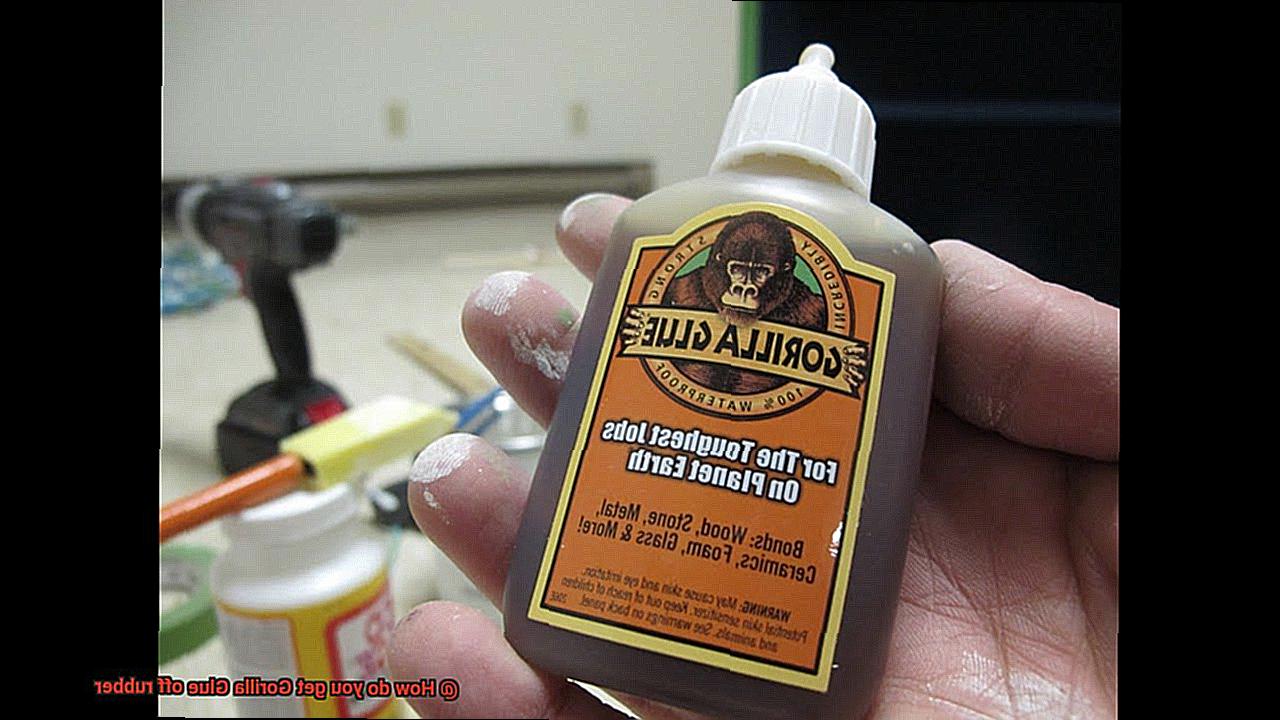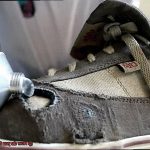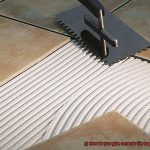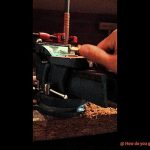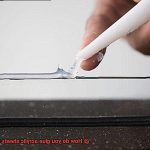Picture this: you’re faced with a sticky situation, and Gorilla Glue has unexpectedly made its way onto your rubber surfaces. Cue the panic. But fear not, my friend. While Gorilla Glue may be notorious for its unbeatable strength, there are a few trusty methods that can help you bid farewell to this tenacious adhesive. In this blog post, we’ll spill the beans on how to effortlessly remove Gorilla Glue from rubber, leaving your surfaces spotless and unharmed.
Acetone:
Contents
- 0.1 Acetone:
- 0.2 Rubbing Alcohol:
- 0.3 Soap and Water:
- 0.4 Vegetable Oil or Petroleum Jelly:
- 0.5 Heat Method:
- 1 What is Gorilla Glue?
- 2 Why Is Gorilla Glue So Difficult to Remove from Rubber?
- 3 Removing Gorilla Glue from Rubber Using Acetone
- 4 Removing Gorilla Glue from Rubber Using Heat
- 5 Removing Gorilla Glue from Rubber Using Alcohol
- 6 Using a Commercial Adhesive Remover
- 7 Tips for Successfully Removing Gorilla Glue From Rubber
- 8 Conclusion
When it comes to battling Gorilla Glue on rubber, acetone is your secret weapon. This everyday household solvent works wonders on cured glue. Grab a clean cloth or cotton ball, dab a small amount of acetone onto it, and gently massage the affected area in circular motions. Watch as the glue surrenders to the power of acetone.
Rubbing Alcohol:
No acetone? No problem. Reach for rubbing alcohol instead. Soak a cloth or cotton ball with this magical elixir and apply it to the glue-soaked region. Allow the alcohol to work its magic for a few minutes before giving it a gentle scrub. Witness as the glue loosens its grip and starts to retreat.
Soap and Water:
For those fresh Gorilla Glue mishaps, salvation can be found right in your kitchen cabinet – soap and water. Create a soapy solution by mixing warm water with a few drops of dish soap. Dip a cloth or sponge into this concoction and lovingly caress the affected area with gentle strokes. Marvel at how the adhesive gradually succumbs to the cleansing power of soap.
Vegetable Oil or Petroleum Jelly:
If you prefer an alternative approach, turn to nature’s bounty – vegetable oil or petroleum jelly. Slather a generous amount of either substance onto the glue-covered surface and let it soak for a few minutes. Armed with a clean cloth, start rubbing the glue with tender care, watching as it dissolves into oblivion. Wipe away any remnants with a damp cloth, leaving no trace behind.
Heat Method:
When all else fails and Gorilla Glue refuses to budge, it’s time to bring in some heat. Grab your trusty hairdryer or heat gun (at a safe distance.) and direct warm air towards the rubber surface. As
What is Gorilla Glue?
When it comes to adhesive strength and versatility, one name reigns supreme – Gorilla Glue. This exceptional adhesive has become a household favorite, delivering unmatched bonding capabilities across a wide range of materials, including rubber. Whether you’re a DIY enthusiast or a seasoned craftsman, Gorilla Glue is your go-to choice for all your bonding needs.
The Mighty Polyurethane:
At the heart of Gorilla Glue’s extraordinary bonding prowess lies its polyurethane-based formula. This remarkable adhesive expands into surfaces, creating an unbreakable bond that endures extreme temperatures and moisture. From rubber to wood, metal to ceramic, stone to so much more, its versatility knows no bounds.
Unleash Your Creativity:
With Gorilla Glue by your side, a world of creative possibilities opens up, especially when it comes to rubber projects. Whether you need to mend a torn rubber sole on your favorite shoe or craft a custom rubber gasket for an automotive masterpiece, Gorilla Glue ensures an unbeatable bond that withstands wear and tear with ease.
Preparation for Perfection:
To achieve optimal adhesion between Gorilla Glue and rubber surfaces, proper preparation is paramount. Thoroughly clean the surfaces, banishing any dirt, dust, or grease. This crucial step ensures a successful bond that will stand the test of time and keep your project secure.
Removal without Ruin:
Accidents happen, and if you find yourself needing to separate Gorilla Glue from rubber surfaces, fear not. There are effective methods to dissolve or soften the glue without causing damage. Acetone, heat, rubbing alcohol, and commercial adhesive removers are tried-and-tested options that can restore your surfaces without harm. Remember, caution and patience are key.
Why Is Gorilla Glue So Difficult to Remove from Rubber?
Gorilla Glue, the adhesive superhero of the DIY world, is notorious for its incredible strength and durability. But when it comes to removing this tenacious adhesive from rubber, it’s like trying to peel off a superhero’s impenetrable cape. In this blog post, we’ll dive into the reasons why Gorilla Glue clings so stubbornly to rubber surfaces and provide some handy tips on how to overcome this sticky situation.
The Powerful Bond:
One of the primary culprits behind Gorilla Glue’s unwavering grip on rubber surfaces lies in its exceptional bonding ability. This adhesive possesses an uncanny talent for diving deep into the nooks and crannies of rubber, creating a bond so tight that Houdini himself would be envious. It’s like a superglue on steroids, refusing to let go no matter how hard you tug.
Chemical Composition:
Gorilla Glue’s chemical makeup also contributes to its unrivaled resilience. At its core, this adhesive is predominantly composed of polyurethane – a compound known for its potent adhesive properties. When exposed to moisture in the air, Gorilla Glue undergoes a chemical reaction and cures into a solid bond that borders on invincibility. Once cured, breaking down and removing this adhesive becomes an arduous task of Hercules-like proportions.
Waterproof and Heat Resistant:
To add insult to injury, Gorilla Glue boasts waterproof and heat-resistant qualities. This means that ordinary solvents and cleaning agents are simply no match for its mighty grip on rubber surfaces. It’s like battling an adhesive with an unyielding shield against any weather condition or temperature change.
Curing Time:
Patience is not only a virtue, but an absolute necessity when dealing with Gorilla Glue. This adhesive takes several hours to fully cure, during which time it strengthens its bond with the rubber surface. If left unattended, the glue hardens into an unyielding fortress that mocks your attempts at removal.
Excess Application:
Last but not least, improper application or excessive use of Gorilla Glue can further complicate the removal process. When this adhesive seeps into crevices or hard-to-reach areas, it becomes a formidable opponent that defies your every attempt to dislodge it.
Conclusion:
Removing Gorilla Glue from rubber surfaces demands careful consideration and specific removal methods. It’s crucial to approach the battle with caution, armed with the right techniques and products to avoid inflicting damage upon the rubber. While Gorilla Glue may seem like an unbeatable adversary, remember that with patience, perseverance, and a touch of superhero determination, you can conquer this sticky situation and restore your rubber surfaces to their former glory.
Removing Gorilla Glue from Rubber Using Acetone
Maybe you accidentally spilled it on your favorite rubber shoes or got it all over your trusty rubber gloves. Fear not. In this blog post, we will guide you through the process of removing Gorilla Glue from rubber using a superhero solvent called acetone.
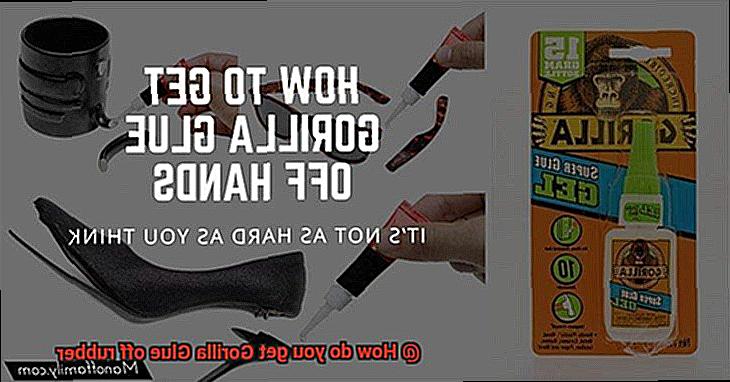
Let’s start by understanding acetone and its superpowers. Acetone is a powerful solvent commonly found in nail polish removers. Its magical ability to break down tough adhesives like Gorilla Glue makes it the perfect weapon in your arsenal against stubborn glue.
Now that we know acetone is our hero, let’s dive into the step-by-step guide on how to remove Gorilla Glue from rubber using acetone:
- Test, test, test: Before applying acetone to the glued area, it’s crucial to test it on a small, inconspicuous part of the rubber. This will ensure that acetone doesn’t cause any damage or discoloration.
- Soak and dab: Once you’ve confirmed that acetone won’t harm your rubber, saturate a cloth or cotton ball with acetone. Gently dab the acetone-soaked cloth or cotton ball onto the glued area, ensuring that every inch is covered.
- Patience is key: Allow the acetone to sit on the glue for a few minutes. This will give it enough time to work its magic and soften the adhesive.
- Scrub-a-dub-dub: After the glue has softened, take a clean cloth or sponge and gently scrub the area in a circular motion. Be gentle and patient – don’t rush it.
- Repeat if necessary: If there are stubborn residue or traces of glue left behind, don’t panic. Simply repeat the process until the rubber surface is completely clean.
- Rinse and dry: Once all the Gorilla Glue is gone, rinse the rubber surface with water to remove any traces of acetone. Make sure to dry it thoroughly before using or storing it.
And just like that, you’ve successfully defeated Gorilla Glue using acetone – your very own superhero sidekick. Remember, this process requires a bit of patience and perseverance, but the end result is worth it. So go ahead, rescue your rubber items from the clutches of Gorilla Glue and restore them to their former glory.
Removing Gorilla Glue from Rubber Using Heat

Fear not. In this guide, we will explore how the power of heat can come to your rescue and effectively remove Gorilla Glue from rubber. With a few simple steps, you can bid farewell to the tenacious adhesive and restore your rubber items to their pristine condition.
Applying heat to soften the glue:
Gather your materials: a hairdryer, heat gun, or iron set on low heat. Exercise caution by starting with a low heat setting to prevent any potential damage to the rubber. Apply heat in short bursts, moving the source back and forth over the glue until it softens like a melting glacier yielding its grip.
Gently removing the softened glue:
Embrace the power of plastic scrapers or your trusty fingernails as you delicately scrape or peel away the softened glue. Avoid excessive pressure or sharp tools that may scar the rubber surface, treating it like fragile porcelain in your hands.
Resolving stubborn residue:
If remnants of Gorilla Glue persist, call upon a solvent ally like acetone or rubbing alcohol. Apply a small amount of solvent onto a clean cloth and gently rub the affected area with firm resolve, dissolving the glue like an alchemical potion.
Thoroughly cleanse and rinse the area:
After successfully vanquishing the Gorilla Glue, cleanse the battlefield with warm soapy water. Make sure to leave no trace behind as you rinse away all residue or solvent, restoring the rubber’s purity like a pristine mountain stream.
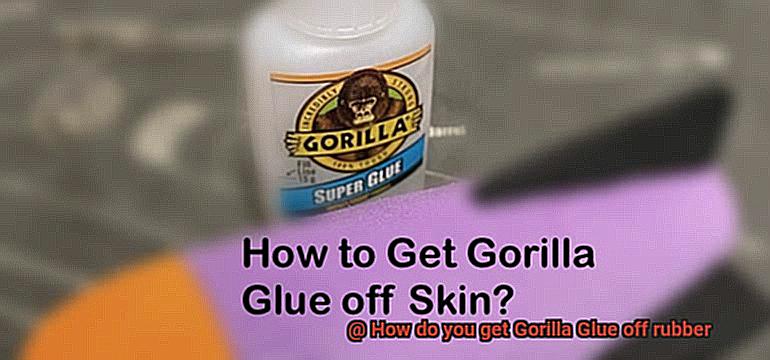
Additional considerations:
Take note that heat may not completely obliterate all traces of the glue; slight discoloration or residue may linger like faint scars of battle. For persistent adhesive residue, venture beyond the realm of heat and explore other methods and products specifically designed for removing adhesive from rubber surfaces.
Removing Gorilla Glue from Rubber Using Alcohol
We’ve all experienced the frustration of Gorilla Glue finding its way onto our cherished rubber surfaces. But fear not. As a seasoned expert, I am here to unveil a tried and tested method for vanquishing this pesky adhesive: the power of alcohol. So grab your cloth, channel your DIY superhero alter ego, and let’s embark on this mission.
The Alcohol Solution:
Alcohol, whether it be isopropyl or rubbing alcohol, serves as our secret weapon in this battle against Gorilla Glue. Its magic lies in its ability to dismantle the glue’s formidable adhesive properties, allowing us to bid farewell to its grip on our beloved rubber surfaces.
Step by Step:
Arm yourself with a clean cloth or cotton ball and a bottle of alcohol.
Dab a small amount of alcohol onto your chosen cloth or cotton ball.
Gently blot the affected area with the alcohol-soaked cloth or cotton ball. Remember, finesse is key here – no aggressive rubbing.
Allow the alcohol a few minutes to work its enchantment, as it begins breaking down the tenacious grip of Gorilla Glue.
Once the glue has softened, take a clean cloth or sponge and delicately wipe away the remnants of the glue. Repeat if necessary until every last trace is eliminated.
Precautions and Alternatives:
While alcohol is generally safe for most rubber surfaces, it’s wise to test it on a small, inconspicuous spot first to ensure it won’t cause any damage or discoloration. In the event that alcohol doesn’t quite do the trick, fear not. You can experiment with using heat, such as a hairdryer or warm water, to soften the glue before gently scraping it off with a plastic scraper or your trusty fingernail. And if all else fails, adhesive removers specifically designed to conquer Gorilla Glue are readily available.
Conclusion:
With the power of alcohol and a dash of patience, you can say goodbye to Gorilla Glue on rubber surfaces. Remember to conduct a spot test, handle the removal process with care, and give your rubber surface a thorough cleaning afterward. Now go forth, my fellow glue warriors, and restore your rubber items to their former glory.
Using a Commercial Adhesive Remover
Don’t fret. The solution lies in the power of commercial adhesive removers. In this comprehensive guide, we’ll take you through the step-by-step process of effectively using a commercial adhesive remover to banish Gorilla Glue from your rubber surfaces, restoring them to their former glory.
Step 1: Choosing the Right Adhesive Remover:
Not all adhesive removers are created equal. It’s crucial to select a product that is suitable for use on rubber surfaces. Before you dive in, check the product label or conduct a patch test on a small, inconspicuous area of the rubber to ensure compatibility and prevent any potential damage.
Step 2: Applying the Adhesive Remover:
Following the manufacturer’s instructions, generously apply the commercial adhesive remover to the affected area. Make sure to cover the entire glue stain. Allow the remover to sit for the recommended amount of time specified on the product label.
Step 3: Gently Scrubbing and Removing the Glue:
After the waiting period, arm yourself with a soft cloth or sponge. With gentle strokes, scrub the area to loosen and dissolve the glue. For stubborn or larger glue stains, repeat this process until every last trace of Gorilla Glue is eradicated.
Step 4: Additional Tools or Techniques (if needed):
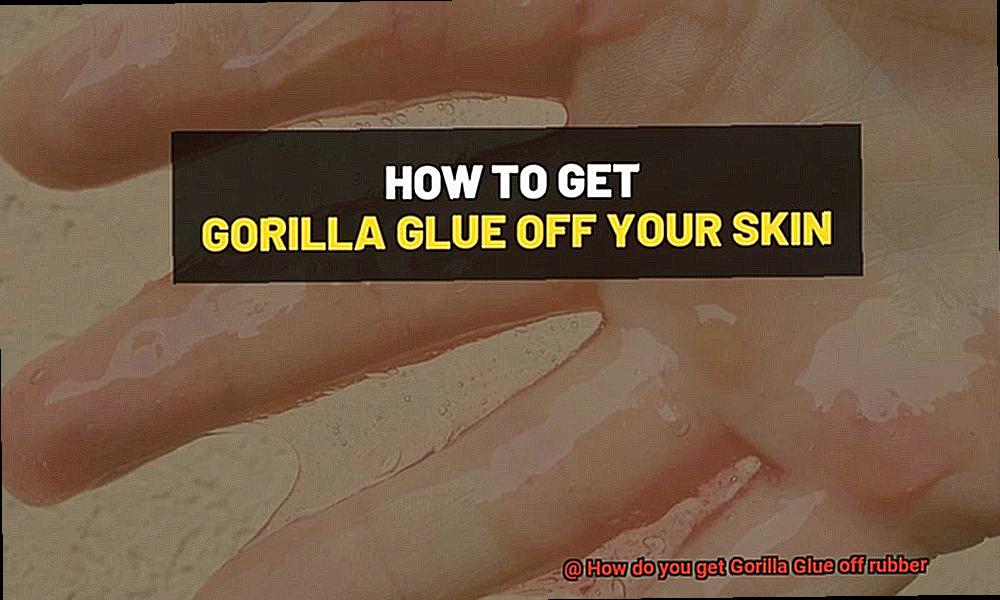
If necessary, complement the adhesive remover with additional tools or techniques. A plastic scraper or toothbrush can be invaluable in loosening and lifting off any lingering glue residue that proves resistant.
Step 5: Cleaning and Restoring:
Once you have successfully bid adieu to Gorilla Glue, it’s time to restore your rubber surface to its former glory. Clean the area with soap and water to remove any remaining residue from the adhesive remover. This final step will not only eliminate any traces of the glue but also leave your rubber looking fresh and clean.
Safety Precautions:
As with any chemical product, exercise caution when using commercial adhesive removers. These products often contain strong chemicals that can be harmful if not handled properly. Protect your skin and eyes by wearing gloves and goggles. Additionally, ensure proper ventilation in the area where the adhesive remover is being used.
Tips for Successfully Removing Gorilla Glue From Rubber
Whether you’re a crafting connoisseur or have had an unfortunate encounter with Gorilla Glue, fear not. Removing this super sticky substance from rubber can be quite the challenge. But with these expert tips, you’ll be bidding farewell to those stubborn glue stains and restoring your rubber items in no time.
Act Fast, Act Smart:
Time is of the essence. The sooner you tackle the glue, the easier it’ll be to remove. Grab a plastic scraper or spatula and gently scrape off as much of the glue as possible without harming your rubber companion. Be careful not to apply too much pressure or you might cause tears.
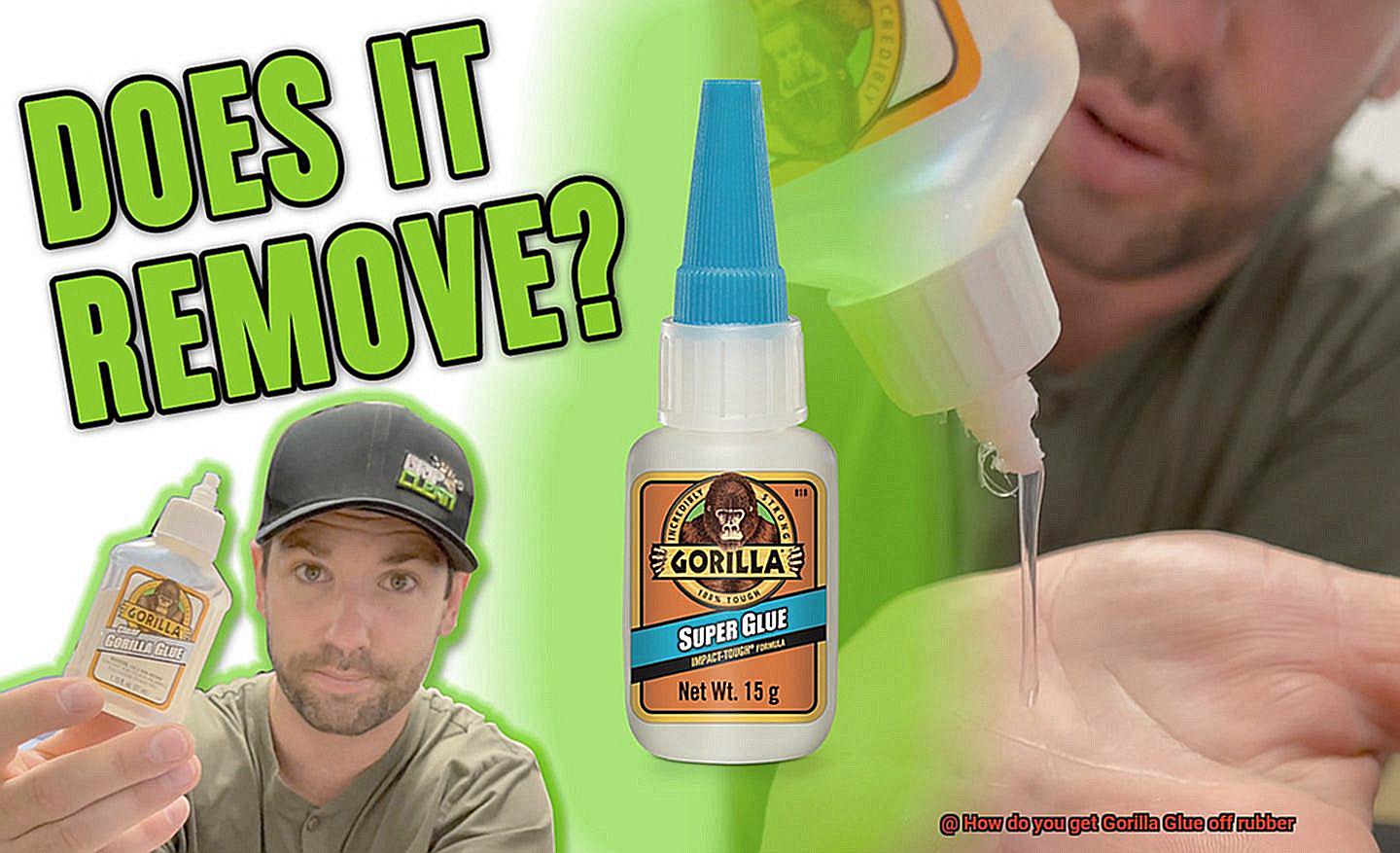
Solvents to the Rescue:
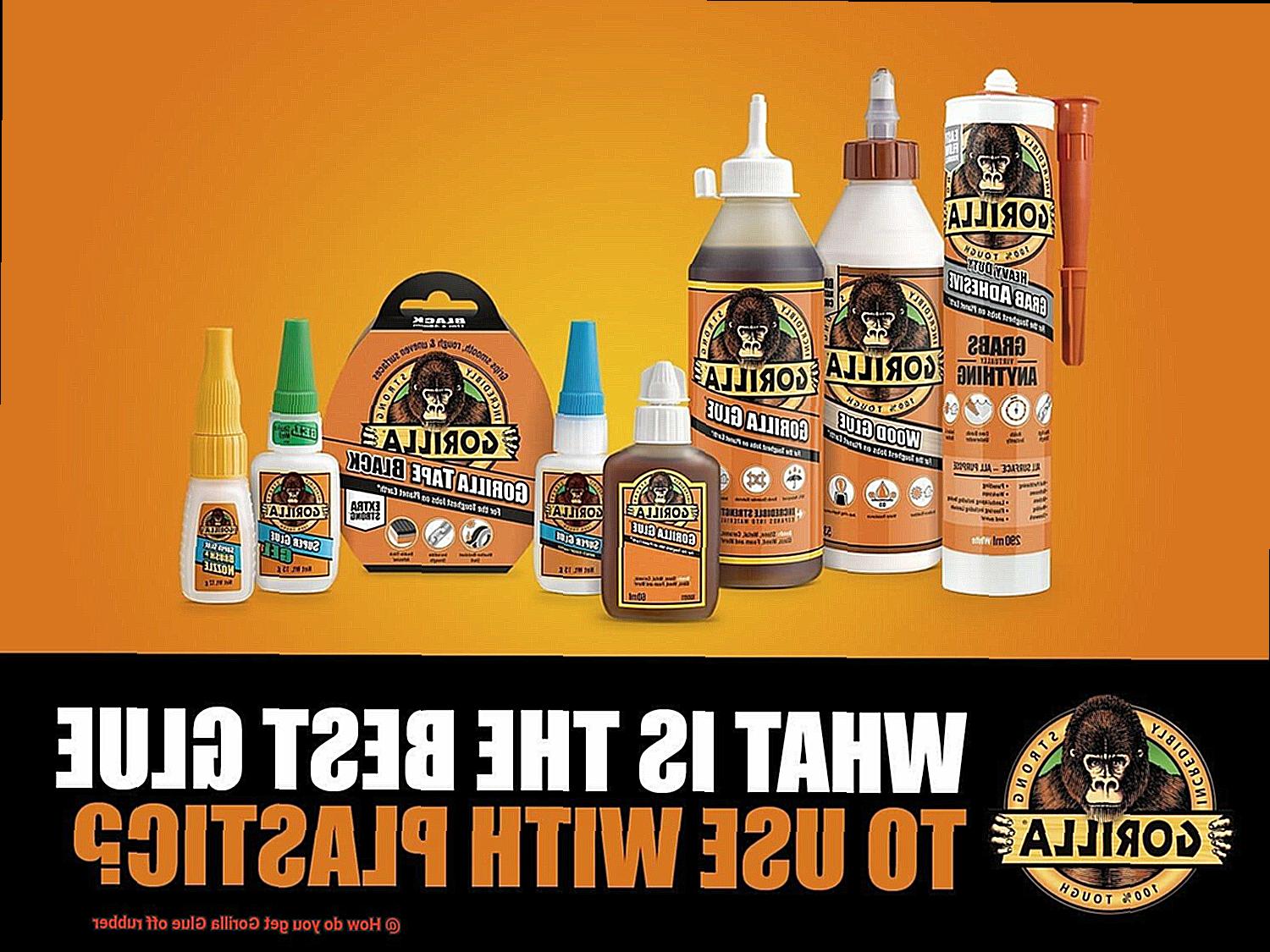
Meet the superheroes of glue removal: acetone and rubbing alcohol. Take a clean cloth or sponge and dab some acetone or rubbing alcohol on it. Gently rub the affected area until the glue starts to soften and come off. But hold your horses. Test a small spot first to ensure your rubber doesn’t suffer any ill effects.
Heat It Up:
Time for some heat action. Get your trusty hairdryer or heat gun (set on low heat) and warm up that stubborn glue. Once it’s nice and soft, use a plastic scraper or your fingernail to gently remove the softened glue. But remember, too much heat can melt your rubber buddy, so exercise caution.
Rub-a-Dub-Dub:
If solvents and heat don’t do the trick, try rubbing alcohol or isopropyl alcohol as an alternative. Apply some alcohol to a cloth and gently rub the affected area. Give it a few minutes to work its magic before attempting to peel or scrape off the glue. Remember, patience is key.
Commercial Adhesive Removers:
When all else fails, call in the big guns. Grab a commercial adhesive remover specifically designed to tackle tough adhesives like Gorilla Glue. Follow the instructions carefully and test it on a small, hidden area before going all out. These specialized products are formulated to dissolve glue without causing any harm to your rubber items.
Also Read: How do you remove dried glue from rubber?
Conclusion
Removing Gorilla Glue from rubber can be quite a challenge, but fear not. I’m here to provide you with some expert tips and tricks that will help you tackle this sticky situation.
First and foremost, it’s important to approach the task with caution and patience. Rushing into it may cause more harm than good.
One effective method is to start by gently scraping off any excess glue using a plastic scraper or your fingernail. Be careful not to damage the rubber surface in the process.
Next, grab a cotton ball or cloth and soak it in acetone or nail polish remover. The powerful solvents in these products can break down the adhesive properties of the Gorilla Glue. Gently rub the affected area with the soaked cotton ball, applying slight pressure to loosen the glue.
If acetone is not readily available, you can try using isopropyl alcohol or even WD-40 as alternatives. These substances also have adhesive-dissolving properties that can work wonders on Gorilla Glue.
For stubborn spots that refuse to budge, try using a toothbrush or an old toothbrush specifically designated for cleaning purposes. The bristles will help scrub away any remaining residue without causing damage.
Remember, safety should always come first when working with chemicals and solvents. Make sure you’re in a well-ventilated area and wear gloves to protect your skin.
In conclusion, removing Gorilla Glue from rubber may require some effort, but with the right approach and these expert tips, you’ll be able to restore your rubber items back to their former glory.

